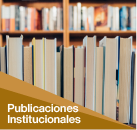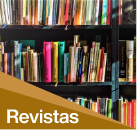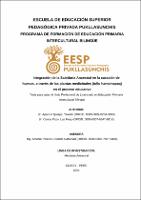Mostrar el registro sencillo del ítem
Integración de la Sabiduría Ancestral en la curación de huesos, a través de las plantas medicinales (tullu hampinapaq) en el proceso educativo
| dc.contributor.advisor | Amable Pinares, Clotilde Natividad | |
| dc.contributor.author | Aparicio Quispe, Yakelin | es_PE |
| dc.contributor.author | Conza Pezo, Luz Mery | es_PE |
| dc.date.accessioned | 2025-06-02T01:09:26Z | |
| dc.date.available | 2025-06-02T01:09:26Z | |
| dc.date.issued | 2024-04-23 | |
| dc.identifier.uri | http://repositorio.pukllasunchis.org/xmlui/handle/PUK/117 | |
| dc.description.abstract | El trabajo de investigación es sobre la curación de huesos (tullu hampinapaq) con plantas curativas, para revalorar y poner en práctica los saberes ancestrales en la provincia y distrito de Paruro, región Cusco. Se realizó con el fin de fortalecer las sabidurías ancestrales en el espacio educativo, a través de materiales educativos. Este trabajo, de enfoque cualitativo, se realizó con el aporte de la sabia conocedora sobre las plantas medicinales para la curación de huesos. Asimismo, para realizar esta investigación se realizaron entrevistas a los padres de familia, docentes y a niñas y niños de dicho contexto. Tiene como objetivo general proponer materiales educativos para integrar la sabiduría ancestral de curación del disloque de huesos (tullu hampinapaq) al proceso educativo de las niñas y niños de quinto y sexto grado de primaria. Hemos llegado a la conclusión que la mayoría de estudiantes conocen a la sabia y las distintas plantas curativas; así como, sus propiedades para el disloque de huesos. Además, conocen a otras sabias hueseras que saben de esta forma de curación. Niñas y niños saben el proceso de curación de disloque de hueso, como el recojo de plantas, el secado, el proceso de preparación del emplasto y el proceso de curación. Dentro de todo, para recoger este saber, se realizó una diagramación de todo el proceso de curación de huesos con plantas medicinales, desde el recojo de las plantas hasta el proceso de curación, cómo se hace el diagnóstico, insumos para la curación (plantas curativas, productos y otros ingredientes), la preparación de la curación, ritualidad y espiritualidad en la curación, efectos de la curación, relación cariñosa que existe entre la persona curada y la sabia, beneficios que tiene la curación y, finalmente, la transmisión que existe de esta sabiduría. Como indicamos, a partir del testimonio de la sabia, padres de familia y estudiantes se proponen materiales educativos para que los maestros las integren en sus sesiones de aprendizaje y sean contextualizadas. Así mismo, que les permitan la vinculación con otras áreas curriculares, tanto para la recuperación y preservación de los saberes locales de la comunidad, como la reafirmación de sus conocimientos personales y sociales. | es_PE |
| dc.description.abstract | Abstract The research work on bone healing (tullu hampinapaq) through medicinal plants to strengthen cultural practices and ancestral knowledge in girls and boys of the fifth and sixth grade of the educational institution 50345 San Martin de Porres in the province and district of Paruro, Cusco region was done in order to collect ancestral knowledge about bone healing and medicinal plants so that this knowledge is present in their learning that is appropriate to their local knowledge. This work was carried out with the contribution of the knowledgeable sage about the healing plants of bone healing, also this research was conducted with a narrative and qualitative character which has the general objective of proposing educational strategies to integrate the ancestral wisdom of bone dislocation healing (tullu hampinapaq) to the educational process of the children of fifth and sixth grade. Likewise, in order to carry out this research, interviews were conducted with the wise woman, parents, and children in this context. We have come to the conclusion that most of the students know the sage and the different healing plants and their properties for bone dislocation, in addition, they know other wise women who heal bones. The children know the healing process of bone dislocation such as the collection of plants, the drying, the preparation process until the healing process. Keywords: ancestral knowledge, educational process, bone healing, educational strategies. | es_PE |
| dc.description.abstract | Pisi rimayllapi willasayki Kay llank´ayqa tullu hampiymanta qurakunawan kaykunata llanllarinapaq mana kay yachaykuna chinkanampaq llapallan irqikunapi yachay wasi ukhupi San Martin de Porres yachay wasi llaqtapi kayqa rurarikuchkan yachay wasi ukhupi karinampaq, yachachiqkuna yachanankupaq yachayninku ukhupi churarinankupaq llaqtankumanta pacha yacharinankupaq. Kay llank´ayqa rurarikun yachaq yachayniwan rap´ikunamanta tullu hampiymanta hinallataqmi kay llank´ariyqa rurarikun runakunaq parlarikusqanmanta, yachaqwan rimarikusqanmanta hinaqa aypayninqa kachkan huk rurayriykunata llank´aykuna rurarikunampaq yachay wasi ukhupi irqikunawan, hinaspapas yachachiqkunapaq yanaparinampaq irqikunata kay yachaymanta pacha. Hinaspataqmi kay llank´ariypaqqa rurarikuran puriykuna rimariykuna yachaqwan, tayta mamakunawan hinaspapas irqikunawan parlay, chaymi chayariyku huk sumaq aypayman achka irqikunan yachanku, riqsirinku kay yachaymanta hampi qurakunawan hampisqanmanta yachaytapas, hinaspapas riqsirinkum yachaqta, chaymi riqsinku qurakunaq allin rurayninmanta, chaymi riqsirinkupas imaynatas hampikun, imaynatas ch´akin, imakunas haykun kay hampiman, imaynatas qurakunata pallarikun hampiynin kama. Llapallan llank´ayqa rurarikuran huk sumaq ruraypin qurakunaq pallakusqanmanta hasta hampikusqanman pacha( imaynatas tulluta qhawakun, imakunas haykun kay hampiman, qurakuna, muchkuykuna, huk hampikunapas, imaynatas rurarikun kay hampi, imaynatas hampikun, pimantas mañarukunku allin hampinapaq, ima allintas runata kay hampi ruran, imaynatas runa apanakun hampiq yachaqwan, hinaspataqmi imaynatas kay yachay achkaman ch´iqirin chayta hinaqa kaymanta pachan riqsirichiyta munayku kay yachaykuna llaqtankumanta pacha yachanankupaq curriculu uckumanta pacha ch´iqirinampaq kay yachaykuna ñawpaqman puririnampaq hinataqmi allin runa kanankupaq. Chanin rimaykuna: ñawpa yachaykuna, yachay puriykuna, tullu hampiy, yachay ruraykuna. | es_PE |
| dc.format | application/pdf | es_PE |
| dc.language.iso | spa | es_PE |
| dc.publisher | Asociación Pukllasunchis | es_PE |
| dc.rights | info:eu-repo/semantics/openAccess | es_PE |
| dc.rights.uri | https://creativecommons.org/licenses/by-nc-sa/4.0/ | es_PE |
| dc.subject | Saberes Ancestrales | es_PE |
| dc.subject | Proceso Educativo | es_PE |
| dc.subject | curación de huesos | es_PE |
| dc.title | Integración de la Sabiduría Ancestral en la curación de huesos, a través de las plantas medicinales (tullu hampinapaq) en el proceso educativo | es_PE |
| dc.type | info:eu-repo/semantics/bachelorThesis | es_PE |
| dc.type.version | info:eu-repo/semantics/publishedVersion | es_PE |
| dc.publisher.country | PE | es_PE |
| dc.subject.ocde | https://purl.org/pe-repo/ocde/ford#5.03.01 | es_PE |
| renati.advisor.orcid | https://orcid.org/0000-0002-7837-0445 | es_PE |
| renati.type | https://purl.org/pe-repo/renati/type#tesis | es_PE |
| renati.level | https://purl.org/pe-repo/renati/nivel#tituloProfesional | es_PE |
| renati.discipline | 112096 | es_PE |
| renati.juror | Eguiluz Duffy, Cecilia María | es_PE |
| renati.juror | Suárez Sánchez, Richard | es_PE |
| renati.juror | Conde Marquina, Antonieta | es_PE |
| thesis.degree.name | Licenciado en Educación Primaria Intercultural Bilingüe | es_PE |
| thesis.degree.discipline | Educación Primaria Intercultural Bilingüe | es_PE |
| thesis.degree.grantor | Escuela de Educación Superior Pedagógica Privada Pukllasunchis | es_PE |
| renati.author.dni | 74562196 | |
| renati.author.dni | 73863793 | |
| renati.advisor.dni | 23846273 |







